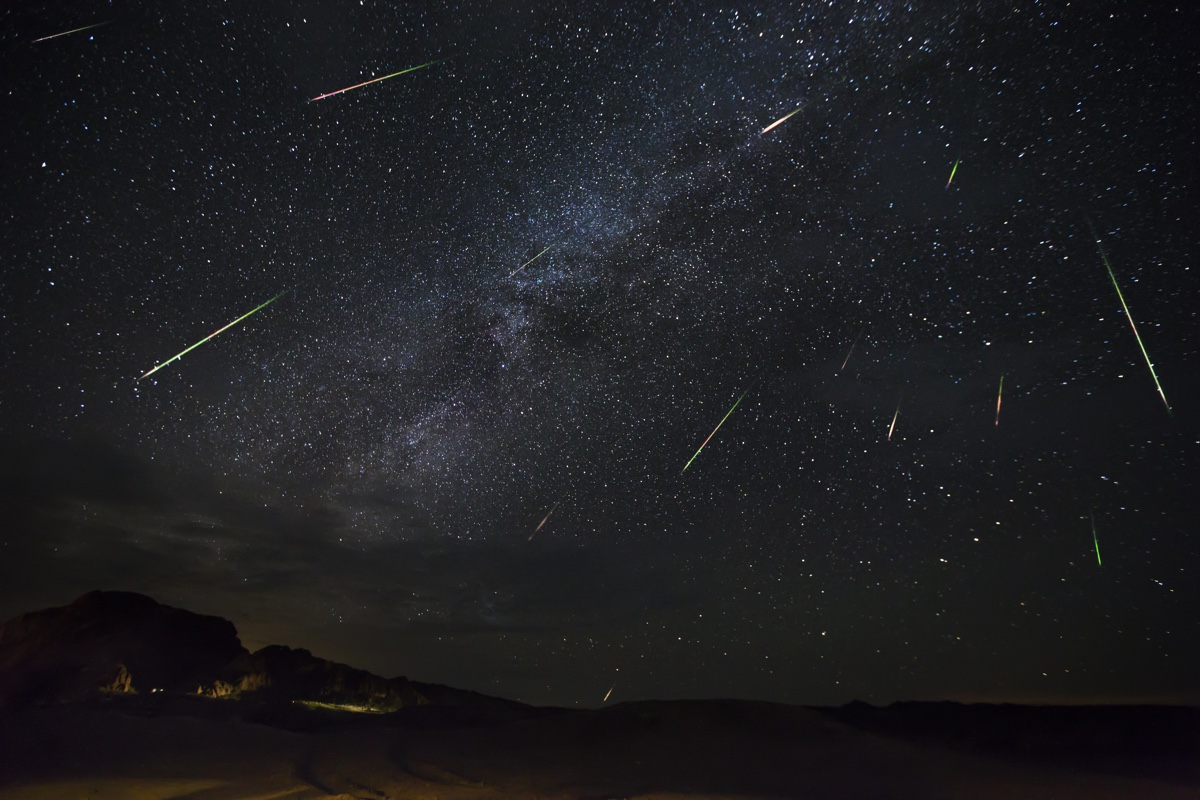Here's How to Watch the Perseid Meteor Shower This Weekend

The Perseid meteor shower is almost here, meaning that it's nearly time to head outside and lift your eyes toward the heavens, where you can gaze upon hundreds of shooting stars lighting up the night sky. The meteor shower is expected to peak this weekend, on Saturday and Sunday (Aug. 11 and 12).
And it doesn't take a rocket scientist to get a good view, or even to wish upon a shooting star (or several dozen of them).
"All you've got to do is go outside, find a nice dark spot, lie flat on your back and look up," Bill Cooke, head of NASA's Meteoroid Environments Office at the Marshall Space Flight Center in Alabama, told Live Science previously. "You don't want binoculars. You don't want a telescope. You just use your eyes." [Perseid Meteor Shower 2018: When, Where & How to See It]
This year's show is expected to be especially stunning, in part, because the moon will be a thin crescent and will set early, leaving a dark night sky for stargazing, reported Space.com, a Live Science sister site. And even though there won't be as many shooting stars as in past years — in 2016, for example, there were as many as 200 visible meteors per hour — there will still be a boatload this weekend, with as many as 60 to 70 meteors per hour during its peak, Cooke told Space.com.
That's way more than on a typical night, when just a handful of meteors per hour whiz by, according to NASA.
So, why are Earthlings treated to such a dazzling display of light during the Perseids? It's all because of the Comet Swift-Tuttle, which zooms close to Earth during its 133-year journey around the sun. When it last passed by in 1992, this comet left a trail of stony grit, NASA reported.
Every summer, Earth ploughs through this thick trail (this year, it entered the trail on July 17, and it will exit on Aug. 24), allowing some of the comet's ancient debris to enter and burn up in our planet's atmosphere. As the space rocks burn, they create a bright streak of light known as meteors, or shooting stars.
Sign up for the Live Science daily newsletter now
Get the world’s most fascinating discoveries delivered straight to your inbox.
Our planet will plough through the densest and dustiest part of the trail this weekend. While the Perseid meteor shower will be visible on Saturday night, the real show comes on Sunday, with peak shooting star activity happening the night of Aug. 12 to 13.
Here are some tips for star-searchers:
-The meteor shower is more visible from the Northern Hemisphere and some mid-southern latitudes, so people in the United States will have a prime view.
-Escape from city lights and find a nice, dark spot, so you'll be able to see the fainter meteors, Cooke said.
-Give your eyes about 30 minutes to adjust to the dark sky."Don't expect to walk outside and see Perseids," Cooke said.
-The best time to see the Perseids is after 2 a.m. local time, when the Perseus constellation is high in the sky, Space.com reported.
-Ditch the binoculars and telescope. You'll want to see the whole night sky, and that equipment will only reduce your field of view.
-Photographers planning to snap nighttime shots should set up their camera on a tripod. Then, take a long-exposure shot, lasting from a few seconds to a minute. But don't go longer than that, otherwise you'll pick up the rotation of the stars, which could block out streaks from shooting stars, Cooke said.
Original article on Live Science.

Laura is the archaeology and Life's Little Mysteries editor at Live Science. She also reports on general science, including paleontology. Her work has appeared in The New York Times, Scholastic, Popular Science and Spectrum, a site on autism research. She has won multiple awards from the Society of Professional Journalists and the Washington Newspaper Publishers Association for her reporting at a weekly newspaper near Seattle. Laura holds a bachelor's degree in English literature and psychology from Washington University in St. Louis and a master's degree in science writing from NYU.









